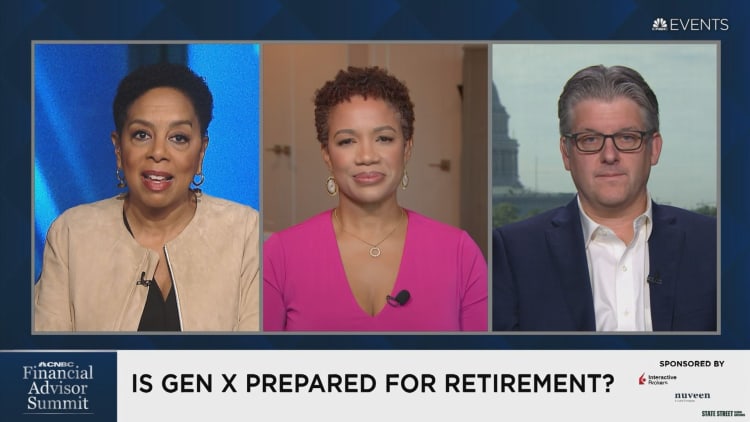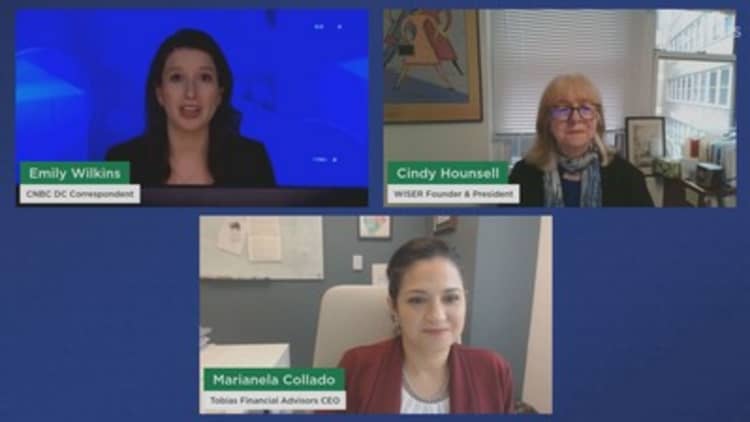Artur Debat | Moment | Getty Images
The number of centenarians in the U.S. is poised to balloon in coming decades. That longevity poses a big financial challenge for households.
By 2054, there will be an estimated 422,000 Americans age 100 and older — more than four times the 101,000 in 2024, according to a Pew Research Center analysis of U.S. Census Bureau data.
Centenarians make up 0.03% of the total U.S. population today, a share expected to reach 0.1% three decades from now, the analysis found.
What’s more, the centenarian population has nearly tripled in the last three decades alone, according to Pew.
Irving Piken during his 111th birthday celebration at the Laguna Woods Community Center in California on Dec. 20, 2019. Piken, who passed away in February 2020, was believed to be the oldest man living in the U.S.
Mark Rightmire/MediaNews Group/Orange County Register via Getty Images
Meanwhile, even if Americans don’t reach age 100, more of them will live to 90 and 95 years old, said John Scott, director of retirement savings at The Pew Charitable Trusts.
That demographic shift will put enormous stress on the traditional notion of financing retirement, experts said.
More from Personal Finance:
Why women turning ‘peak 65’ may be financially vulnerable
Americans think they need almost $1.5 million to retire
What’s wrong with TikTok’s viral savings challenges
“If people still retire in their 60s, it means the funding for retirement needs to go on for decades,” said Barry Glassman, a certified financial planner and founder of Glassman Wealth Services.
“If retirement is going to last that long, then savings needs to last that long as well,” said Glassman, a member of CNBC’s Advisor Council.
Working longer may be necessary …
Among the best ways to hedge against outliving one’s savings is by working longer, according to retirement experts.
It’s already happening.
By 2032, 25% of men and 17% of women age 65 and older are expected to be in the labor force, up from 24% and 15%, respectively, in 2022, according to Population Reference Bureau.
That may be more necessary as employers have offloaded responsibility for retirement savings onto workers’ shoulders, by shifting from pensions to 401(k)-type retirement plans. Workers must choose how to invest and how much money to save with each paycheck to ensure for a comfortable retirement.

But even delaying retirement by a few years — to 68 years old from 65, for example — can financially “move the needle significantly,” Glassman said.
“People need to be prepared to work longer,” he said.
Doing so yields more years of income, and generally allows people to save for a longer time, delay drawing down their nest egg and defer claiming Social Security benefits.
Social Security, unlike 401(k) plans, provides guaranteed income for life. By delaying claiming to age 70, retirees can maximize their monthly checks.
If they have the resources, retirees can also consider buying an annuity with a portion of their savings to generate a monthly guaranteed income stream like Social Security, Pew’s Scott said.
Retirees can still work part time so they have some additional cash flow, Glassman said.
He sees more clients doing this, with professionals who become consultants upon retirement, or radiologists who can work remotely and read health scans, he said.
“There is a demand for labor in this country,” Scott said.
Staying up to date with skills may help retirees find some work later if they need to supplement income, he said.
… and more possible in the future
Of course, working longer won’t be possible for everyone.
People may have physically taxing jobs that require them to retire relatively early, or suffer health complications that require early retirement, for example. Others may not be able to do jobs on a part-time basis.
Retirement is likely to be full of many more “healthy, vibrant” years in coming decades due to advancements in technology and health care, for example — meaning the notion of working longer, even in physical jobs, isn’t far-fetched, Glassman said.

He pointed to marathon statistics as an example: 441 people age 70 and older finished the New York City Marathon in 2023, about 0.9% of all runners. That’s up from 144 people two decades earlier, or roughly 0.4% of the total runners.
Aside from work, Americans should try to save as much as they can, and start as early as they can, Scott said. Those who get an employer 401(k) match at work should strive to save enough to get the full match, which is essentially free money, he said.
Responsibilities like paying student loans, saving for a house and spending on caregiving needs for children does make saving difficult, but even saving a little bit now will help in the long run, he said.
“Over time, that will add up,” Scott said.










